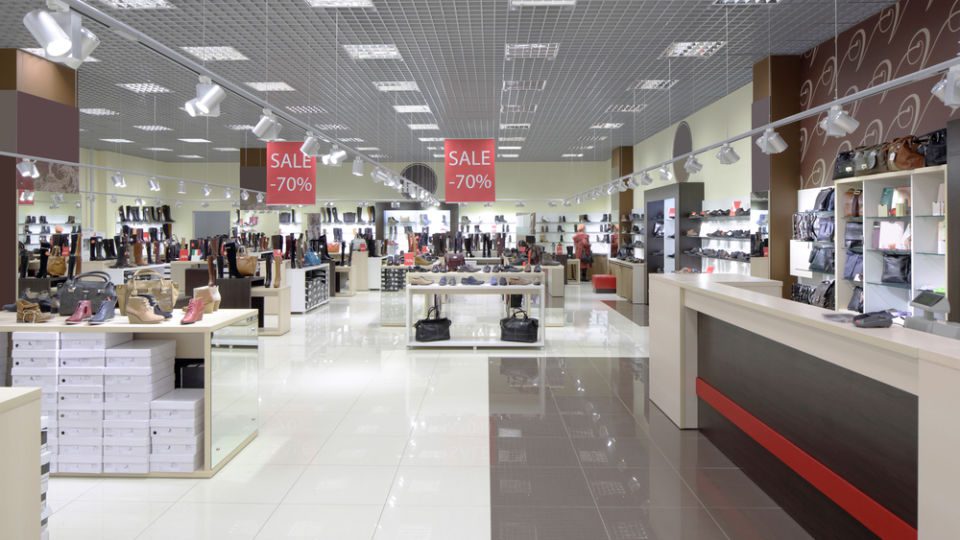 While foot traffic in many stores has slowed down due to the COVID-19 pandemic, things will be picking up. This is good news for retailers — but it may not be as good for their floors.
While foot traffic in many stores has slowed down due to the COVID-19 pandemic, things will be picking up. This is good news for retailers — but it may not be as good for their floors.
Floors are among the dirtiest parts of any building, and it’s not always easy to keep them clean. Customers walk in and out of stores all day long, bringing dirt and germs along with them on the bottom of their shoes. Carpets can be especially filthy; as a porous surface, they trap contaminants in their fibers. In fact, carpets can hold more than four times their weight in bacteria, viruses, dust, skin cells and other undesirable materials.
Cleaning and vacuuming floors is tedious and time-consuming. The task is also physically demanding, since it involves standing for long periods of time and pushing and pulling heavy equipment over and over again. Sprains and strains — like those caused by the repetitive motions used when vacuuming — are among the most common on-the-job injuries. But there’s a simple solution: Let the robots help.
Collaborative robots, or “cobots,” are ideally suited for monotonous tasks like cleaning floors. These machines are designed to work side-by-side with humans, figuratively and literally. They take on a routine chore from a team member swiftly and safely, navigating around people and objects as needed. Here are three reasons retailers should consider incorporating robotic solutions into their floor-cleaning regimen.
Improved Perception
For retailers, cleanliness is not optional. Most people don’t notice if a store’s floor is clean, but they do notice if it’s dirty. A stained, muddy or sticky floor can lower a consumer’s perception of a store in seconds. And no one wants to shop in an unclean store.
Autonomous vacuums and sweepers are programmed to learn specific routes. This increases cleaning consistency and frequency, ultimately ensuring a higher-quality clean. They don’t get distracted or rush because they have other tasks to complete, leaving huge swaths of unvacuumed space; they simply follow their route. They maintain a steady pace, and they get the job done on time, every time.
It’s easier for cobots to clean in a closed store simply because they won’t have to maneuver around customers. But retailers that are open 24/7 have an added bonus: Customers get to see the cobot in action. Just as customers are less likely to question a bill generated by a register versus one tallied by hand, they are less likely to question a store’s cleanliness when they see robots doing the work.
Increased Efficiency
But it’s not all about appearances. Fleet management software included with many cobots provides hard data on the efficacy of their actions. They don’t just say that they cleaned; they show how, when and where that cleaning was performed. Retailers receive detailed reports on total run time and routes completed, allowing them to track performance over time and adjust settings as needed. Retailers with multiple locations can quickly view and track metrics related to the cleanliness of all their stores in one report and share the information with stakeholders.
Most important, cobots provide verifiable confirmation that they completed the cleaning. Many retailers rely on regular store employees to do the vacuuming and basic cleaning; because employees may not be trained on proper cleaning techniques, the results are often substandard. Retailers that hire outside help aren’t necessarily better off, as it’s not always easy to tell if a janitorial team actually did the work they’re being paid to do. With cobots, this is rarely an issue. Floors are consistently cleaned, and they’re consistently cleaned well.
Autonomous vacuums can make stores both cleaner and healthier. Through the use of a high-efficiency particulate air (HEPA) filter, they improve air quality by removing or trapping pollutants. This includes harmful viruses and bacteria. At a time when consumers are hyperaware of health and hygiene practices, this benefit cannot be overstated.
Decreased Costs
Many retailers are hesitant to adopt new technology, thinking the return on investment won’t be worth it. Floor-cleaning cobots, however, save both time and money, and they quickly pay for themselves.
With the help of cobots, janitorial teams can double their tasks with the same amount of people. On average, team members spend about one-third of their time vacuuming. If they’re doing it properly and thoroughly, it may take even longer. When cobots take that task off their hands, team members can spend their time on higher-value, more detailed work, like cleaning and disinfecting high-touch surfaces of a store such as door handles and shopping carts. In other words, not only are the cobots more productive themselves, but they also increase the productivity of the entire team.
Many surface care and janitorial companies offer a subscription model on cobots, making them an affordable solution for stores of all sizes. Clients pay a flat monthly fee that includes parts and maintenance, eliminating large upfront capital investments on equipment and ongoing fees related to parts and maintenance.
Cobots may not be right for every store. They need space to maneuver, and some aisles may be too narrow. They operate best on flat surfaces, so they may have trouble navigating flooring with inclines or declines. And they won’t be as efficient in extremely high-traffic stores. But for most stores, cobots are a great way to increase efficiency, decrease costs and demonstrate your commitment to cleanliness to your customers.
Thomas Holland is the CEO of APEX Surface Care, a 23-year-old Certified B Corporation® and national specialty surface care company headquartered in Texas. APEX partners with ICE Robotics to integrate autonomous cleaning equipment and technology into its surface care solutions, providing a more modern, efficient and data-driven approach.




